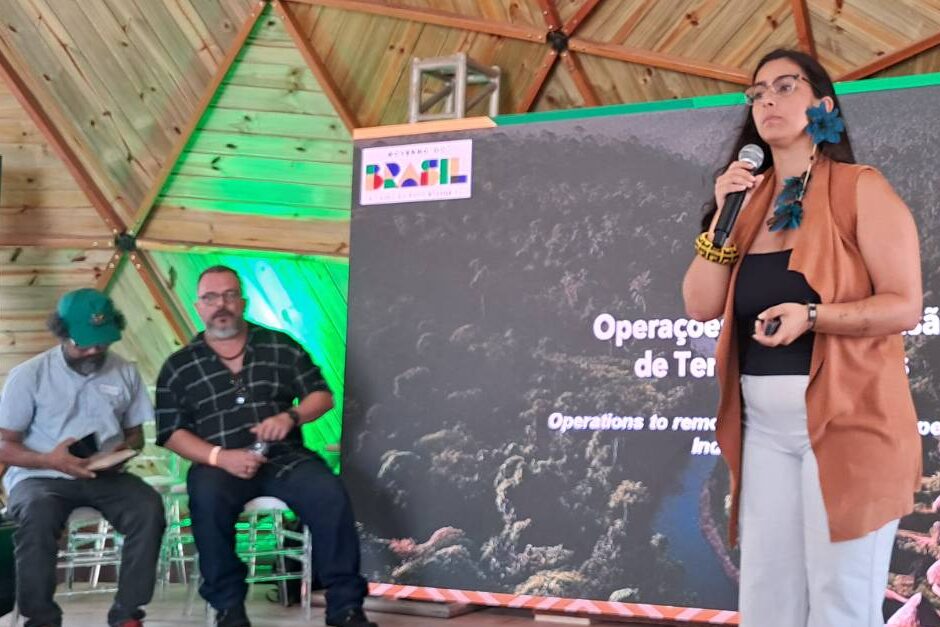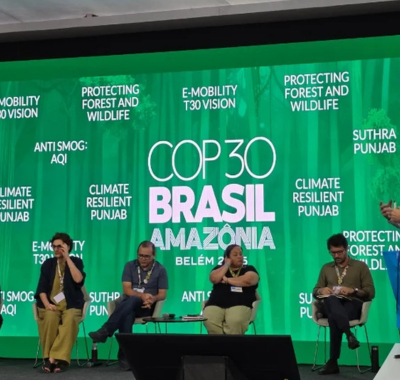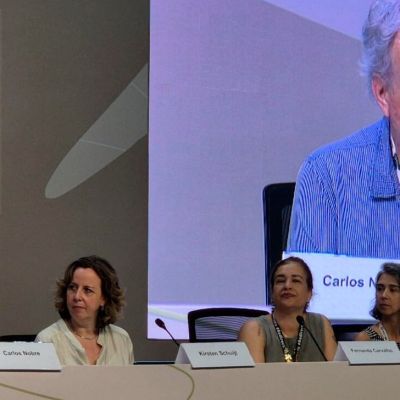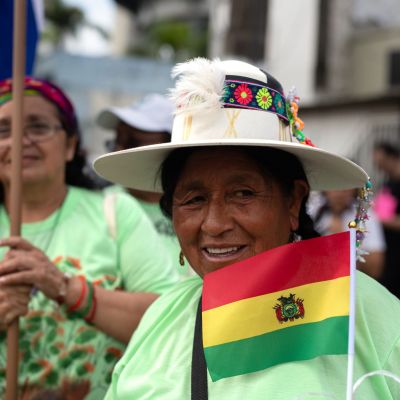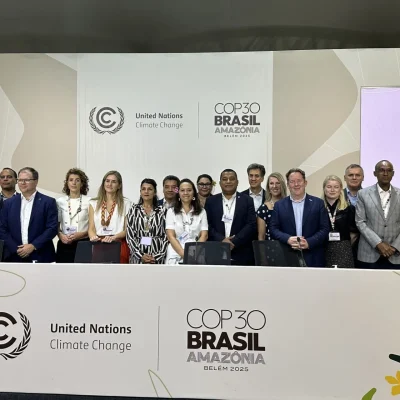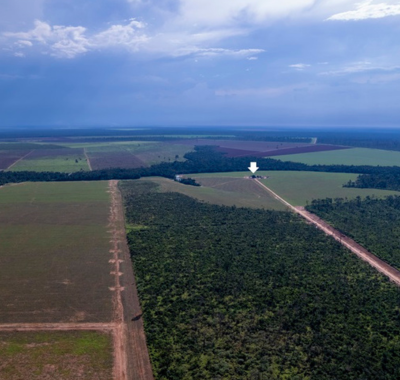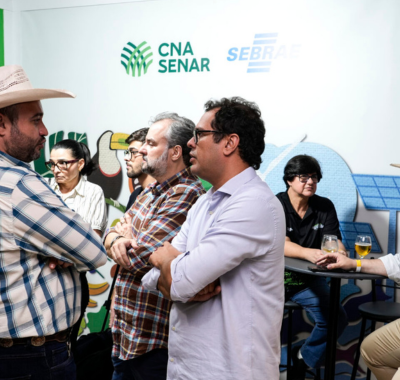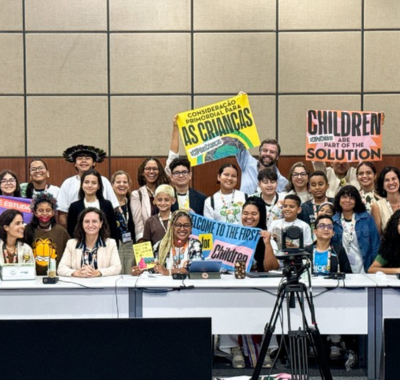Illegal mining starts to shift from the Amazon to the Cerrado, Brazilian ministry reports
After invaders were removed from the Yanomami, Kayapó, Munduruku, and other protected Indigenous lands in the Amazon, business groups are shifting their illegal operations further south, to the Sararé Indigenous Land in the state of Mato Grosso.
By Daniel Camargos
BELÉM, Pará — Julia Ospina Kimbaya, de-intrusion monitoring coordinator for Brazil’s Ministry of Indigenous Peoples (MPI), announced that federal authorities have detected a shift in illegal mining business networks. These operations are relocating into the Sararé Indigenous Land in Mato Grosso, in the Midwest, following efforts to expel invaders from protected territories such as the Yanomami Indigenous Land.
Called “de-intrusion” missions, these operations are a consequence of ADPF 709 (Allegation of Breach of Fundamental Precept), a lawsuit brought before Brazil’s Supreme Federal Court (STF) in 2020. The suit compelled the government, during the pandemic, to protect Indigenous peoples and remove illegal occupants from eight territories, including Yanomami, Munduruku, Kayapó and Apyterewa lands.
On Tuesday (Nov. 18), Julia spoke at a panel at Village COP, the Indigenous pavilion at COP30 in Belém, Pará. She reported that while illegal mining has declined in some areas, the underlying networks remain, merely shifting elsewhere. “There is an intrinsic relationship between the networks operating in Yanomami, Kayapó, Munduruku and Sararé,” she said.
This migration involves both organized criminal groups and businesses supplying machinery, fuel and logistics to mining operations. Julia noted that Indigenous people continue to be recruited at these illegal fronts without pay. “Mining on Indigenous lands is a cruel enterprise,” she said.
The consequences are already evident in the Sararé Indigenous Land. In 2025, it recorded Brazil’s highest number of illegal mining alerts, with 1,814 cases logged by Ibama, the environmental protection agency. A federal task force, coordinated by the MPI and launched in August, destroyed 490 camps, 113 excavators, 361 mining engines, nearly 51,000 liters of fuel, plus motorcycles, trucks and ammunition. According to Censipam—which monitors clandestine activity—estimated losses to illegal mining exceed US$33.22 million (R$177 million).
Covering 67,719 hectares, the Sararé Indigenous Land is home to 201 Nambikwara people. Officially recognized in 1985, the territory is a patchwork of forest and savannah and faces persistent threats from miners, loggers, farmers and land grabbers, according to Brazil’s Socio-Environmental Institute (ISA).
The government faces a new challenge: post-eviction
Julia calls for the post-eviction measures to become permanent state policy, with dedicated funding and continuity similar to Ibama’s PPCDAN plan to combat deforestation. “Removal operations are an ongoing activity,” she said.
She said the MPI has worked to coordinate the government agencies Funai, Ibama, ICMBio, the Federal Police and the National Force in joint efforts, while helping Indigenous associations access funding and create economic alternatives after invasions.
“This helps to get the relatives [as Indigenous people call one another] out of illegal activities,” said Julia, a member of Colombia’s Kimbaya people who has worked in Brazil’s Rio Grande do Sul on Indigenous rights and political ecology.
The experience of the Apyterewa Indigenous Land in Pará—the state hosting COP30—shows the challenges after crackdowns. Although it was one of the priority areas under ADPF 709, violence has remained high since early 2024, after enforcement operations ended.
Multiple armed attacks have occurred in recent months, including shootings at newly-built houses and ambushes targeting Indigenous people while hunting. In January, three Parakanã were attacked by gunmen. The previous December, dozens of bullets struck wooden structures. The Parakanã Indigenous Land is now the most deforested in Brazil.
The Federal Police have launched investigations, and the MPI renewed orders for the National Force to remain. In May, the Coalition of Indigenous Peoples of Brazil (APIB) submitted a report to Brazil’s Supreme Federal Court, criticizing flaws in the post-eviction plan and calling for more security.
The Parakanã face a resurgence of invaders drawn by cocoa prices and by illegal cattle abandoned when occupiers fled. These abandoned plantations continue to fuel internal disputes over the harvest.
Federal crackdowns have also led illegal mining entrepreneurs to adjust operations. In April, Repórter Brasil revealed that operators under investigation in Brazil were moving excavators and investments to Guyana, where local laws permit mining on Indigenous lands if communities approve. The report found that those previously active in Yanomami, Kayapó and Munduruku territories expanded into Guyana as Brazil increased enforcement.
As Julia explained, criminal networks do not dissolve under pressure; they simply move to less-monitored areas. She emphasizes that a sustained state presence is critical to prevent illegal mining from spreading where enforcement is weaker.
This report was produced by Repórter Brasil, as part of the Collaborative Socio-Environmental Coverage of COP30. Read the original report here.

